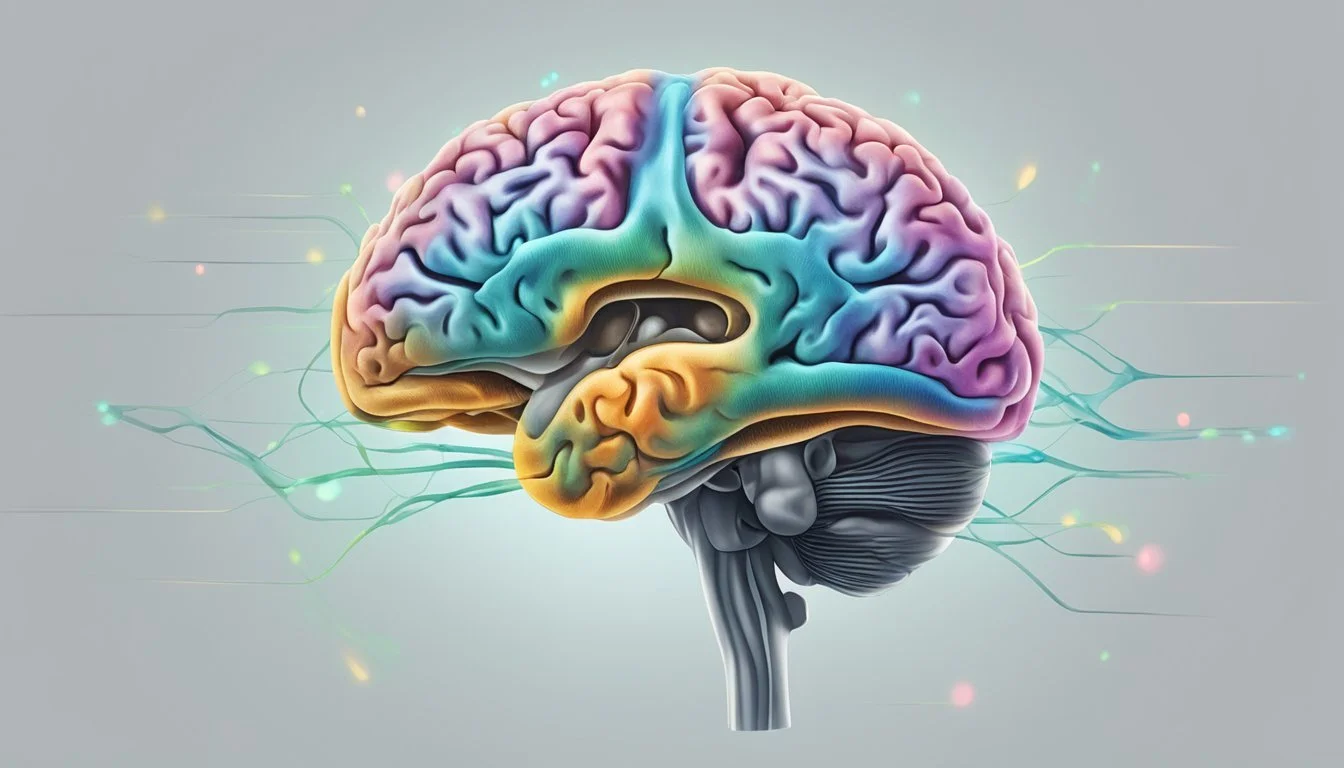The Scent of Danger: Unraveling the Mystery of Psychopath Body Odor
Psychopaths have long fascinated researchers and the general public alike. Recent studies have uncovered an intriguing link between psychopathic traits and olfactory abilities. Individuals with higher psychopathy scores tend to have a diminished sense of smell, struggling to distinguish between common odors like coffee and oranges.
This connection between psychopathy and the olfactory system raises questions about the role of smell in social behavior and empathy. The orbitofrontal cortex, a brain region associated with both olfactory processing and emotional regulation, may play a key role in this relationship. Researchers suggest that impaired olfactory function could serve as a potential marker for psychopathic tendencies.
While the idea of psychopaths having a distinct body odor remains unproven, these findings open new avenues for understanding the complex interplay between sensory perception and personality traits. Further research may provide valuable insights into the neurobiological underpinnings of psychopathy and potentially lead to novel diagnostic tools.
Understanding Psychopathy
Psychopathy is a complex personality disorder characterized by distinct traits and behaviors. It exists on a spectrum, with some individuals displaying psychopathic tendencies while functioning in society.
Defining Psychopathic Traits
Psychopathic traits include callousness, lack of empathy, and manipulative behavior. People with these traits often exhibit shallow emotions and struggle to form genuine connections.
They may engage in impulsive and sometimes antisocial actions without considering consequences. Lack of remorse is another hallmark characteristic.
Psychopaths typically display superficial charm and charisma, using these qualities to manipulate others for personal gain. They tend to be self-centered and have an inflated sense of self-worth.
Research suggests that psychopaths process emotions differently, particularly fear and distress in others. This may contribute to their reduced empathy and callous behavior.
Non-Criminal Psychopaths
Not all individuals with psychopathic traits engage in criminal activities. Some function within society, often in high-pressure or leadership roles.
These non-criminal psychopaths may use their traits to succeed in business, politics, or other competitive fields. Their lack of empathy and callousness can be advantageous in cutthroat environments.
Studies have found that certain professions attract higher percentages of individuals with psychopathic tendencies. These include roles in law enforcement, surgery, and corporate leadership.
Non-criminal psychopaths may struggle with personal relationships and ethical decision-making. Their behavior can still harm others emotionally or financially, even if it doesn't break laws.
Identifying these individuals can be challenging, as they often mask their true nature with charm and social skills.
Psychopaths and Olfactory Function
Research suggests a link between psychopathic traits and impaired olfactory function. This connection involves specific brain areas and can be measured through various odor tests.
Impaired Olfactory Ability
Studies indicate that individuals with psychopathic tendencies often exhibit a diminished sense of smell. This impairment affects their ability to distinguish between common odors like coffee and oranges.
The difficulty in odor discrimination points to underlying neurological differences in people with psychopathic traits. These olfactory deficits may serve as a potential marker for identifying psychopathic characteristics.
Researchers have found that higher psychopathy scores correlate with poorer performance on odor discrimination and identification tasks. This suggests a connection between olfactory dysfunction and the presence of psychopathic traits.
Olfactory System and the Brain
The olfactory system's connection to psychopathy involves specific brain regions, particularly the orbitofrontal cortex. This area in the front part of the brain plays a crucial role in processing olfactory information.
In individuals with psychopathic tendencies, the orbitofrontal cortex may function less efficiently. This inefficiency could explain the observed difficulties in odor perception and discrimination.
The olfactory bulbs, which receive sensory input from the nose, may also be affected in psychopaths. Alterations in these structures could contribute to the overall impairment in smell processing.
Olfactory Tests and Odor Identification
Researchers use various olfactory tests to assess the relationship between psychopathy and smell function. These tests typically involve odor identification, discrimination, and threshold detection tasks.
Common assessments include:
Odor identification tests: Participants identify specific scents from a set of options
Discrimination tasks: Subjects distinguish between different odors
Threshold tests: Measure the lowest concentration of an odor that can be detected
Performance on these tests can provide insights into an individual's olfactory abilities and potentially indicate psychopathic traits. Lower scores in odor identification and discrimination may correlate with higher psychopathy scores.
These findings highlight the potential use of olfactory tests as a tool in understanding and potentially identifying psychopathic tendencies.
Research Insights
Recent studies have revealed intriguing connections between psychopathy and olfactory abilities. This research offers new perspectives on identifying psychopathic traits through sensory processing.
Study of Psychopathy and Smell
A study led by Richard Stevenson at Macquarie University found that individuals with psychopathic tendencies often have an impaired sense of smell. This research suggests a link between olfactory processing and psychopathic traits.
The study involved participants completing a questionnaire to assess their psychopathic traits. They then underwent tests to evaluate their ability to identify and discriminate between different odors.
Results showed that those scoring higher in psychopathic traits performed worse on odor identification tasks. This correlation was particularly strong for traits related to manipulative behavior and lack of empathy.
Identifying Psychopathic Behavior
The connection between olfactory impairment and psychopathy offers a potential new method for identifying individuals with psychopathic tendencies. Researchers believe this link stems from dysfunction in the orbitofrontal cortex (OFC).
The OFC plays a crucial role in both olfactory processing and regulating social behavior. Impaired functioning in this brain region may contribute to both reduced smell ability and psychopathic traits.
While not a definitive diagnostic tool, olfactory testing could serve as an additional screening method. It may help identify individuals who warrant further psychological assessment for psychopathic traits.
This approach could be especially useful in clinical or forensic settings. It provides an objective measure that is difficult to fake, unlike self-report questionnaires.
Psychopathology and Sensory Processing
Psychopathy influences how individuals process sensory information, particularly in relation to olfactory cues and impulse control. These differences can manifest in altered sensitivity to scents and atypical responses to chemosensory stimuli.
Sensitivity and Sensory Perception
Psychopaths often exhibit altered sensory processing patterns. They may display heightened sensitivity to certain scents while showing reduced responsiveness to others. This can impact their overall chemosensory perception.
Research suggests that individuals with psychopathic traits may have a lower threshold for detecting certain odors. This heightened sensitivity could potentially contribute to their sensation-seeking behaviors.
Some studies indicate that psychopaths process emotional facial expressions differently when exposed to specific body odors. This altered processing may influence their social interactions and emotional responses.
Impulse Control and Olfactory Detection
Impulsivity is a key trait in psychopathy, and it extends to sensory processing. Psychopaths often struggle with impulse control, which can affect their reactions to olfactory stimuli.
Their inefficient processing of sensory information may lead to rapid, sometimes inappropriate responses to scents. This can manifest as sudden aversions or attractions to certain odors.
Psychopaths may also use scent-related cues differently in decision-making processes. Their impulsive nature might cause them to act on olfactory information without fully processing its implications.
Research has explored links between psychopathy, impulsivity, and olfactory detection thresholds. Some findings suggest that individuals with higher psychopathic traits may have altered abilities in detecting and discriminating between different scents.
Behavioral and Social Considerations
Psychopaths exhibit distinct behavioral patterns and social interactions that stem from their unique psychological makeup. These traits manifest in their lifestyle choices, early experiences, and interpersonal relationships.
Influence of Lifestyle and Early Experiences
Psychopaths often lead erratic lifestyles characterized by impulsivity and risk-taking behaviors. Their unpredictable routines may contribute to irregular hygiene habits, potentially affecting their body odor.
Childhood experiences play a crucial role in shaping psychopathic tendencies. Neglect or abuse during formative years can impair emotional development and social skills.
This lack of proper socialization may result in a disregard for personal grooming standards, further impacting their olfactory presentation.
Empathy and Manipulative Behaviors
Psychopaths typically display a marked lack of empathy, which influences their social interactions. This deficit may lead to an inability to recognize or care about how their body odor affects others.
Their manipulative nature often manifests in charm and charisma. Psychopaths may use artificial scents or excessive grooming to mask their natural odor as part of their manipulative tactics.
This behavior aligns with their tendency to create false personas to deceive others. They might exploit societal norms around personal hygiene to blend in or gain trust.
Psychopaths' disregard for social norms extends to personal space and boundaries. This may result in them invading others' personal space, making their body odor more noticeable and intrusive.
Comparative Analysis with Psychiatric Disorders
Research suggests links between olfactory function and various mental health conditions. Examining these connections provides insights into potential shared mechanisms and diagnostic approaches.
Psychopath Body Odor and Mental Health
Olfactory impairments are observed in several psychiatric disorders, including schizophrenia and depression. Studies have shown that some individuals with schizophrenia experience difficulties in correctly identifying odors.
This olfactory dysfunction may contribute to the overall psychopathology of these conditions. Research indicates that alterations in body odor are not limited to a single compound but involve complex variations.
Gas chromatography-mass spectrometry (GC-MS) analysis has revealed differences in body odor profiles between schizophrenic patients and control groups. These findings suggest potential biomarkers for certain mental health conditions.
Olfactory deficits have also been linked to Alzheimer's disease, with changes in smell perception often preceding other cognitive symptoms. This connection highlights the importance of olfactory function in neurological health.
Odor sensitivity can be affected by chronic psychological distress, potentially leading to heightened sensitivity to certain smells. This phenomenon may serve as a behavioral marker for psychological distress.
Understanding these olfactory-psychiatric links could lead to improved diagnostic tools and treatment approaches for various mental health conditions.
Neuroscientific Perspectives
Neuroscience provides insights into the brain structures and functions associated with psychopathy and olfactory processing. These areas of research shed light on potential links between psychopathic traits and variations in body odor perception or production.
Neuroanatomy of Psychopathy
Brain imaging studies have revealed structural and functional differences in psychopathic individuals. The amygdala, a key region for emotional processing, often shows reduced volume and activity. The prefrontal cortex, involved in decision-making and impulse control, frequently exhibits abnormalities.
Psychopaths display altered connectivity between the amygdala and prefrontal cortex. This may contribute to their emotional deficits and impaired behavioral regulation.
Research indicates reduced gray matter in the temporal poles, posterior cingulate, and orbitofrontal cortex of psychopaths. These areas play roles in social cognition, empathy, and moral reasoning.
Neuroscience of Chemosensory Perception
The olfactory system involves complex neural pathways. Odor molecules bind to receptors in the nasal epithelium, sending signals to the olfactory bulbs. From there, information travels to multiple brain regions.
Key areas for odor processing include the piriform cortex, amygdala, and orbitofrontal cortex. These regions integrate olfactory input with emotional and cognitive processes.
Neuroimaging studies show that psychopaths may have altered activity in some of these olfactory-linked brain areas. This could potentially influence their perception or interpretation of body odors.
Research has found connections between personality traits and olfactory abilities. However, more studies are needed to directly examine potential links between psychopathy and chemosensory perception.








